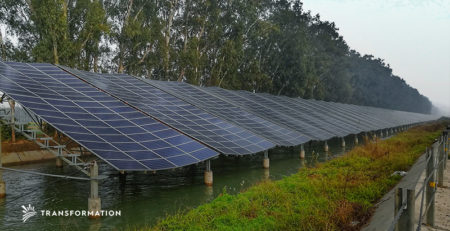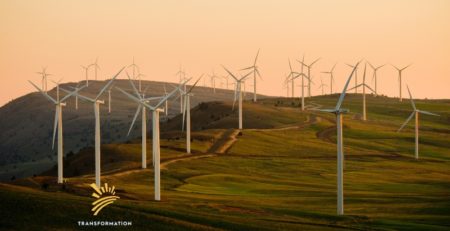Offshore and Onshore Wind Turbines
Energy accounts for over two-thirds of global greenhouse gas emissions. The U.S. is a large contributor to these emissions – in 2019, sixty-three percent of U.S. electricity generated came from fossil fuels, with only eighteen percent generated from renewable energy. To mitigate climate change, clean and sustainable energy sources such as wind power must be part of the solution.
From the first sailors to pre-industrial grain mills to the latest wind turbine technology, people have been using wind power for centuries. Today, harnessing wind power is one of the cleanest ways to generate electricity. It’s also one of the most abundant resources. Unlike fossil fuels, which emit particulate matter and produce greenhouse gases, wind turbines do not cause pollution nor do they contribute to climate change. Because of it’s abundance, wind power is considered a cost-competitive resource of energy, and a viable alternative to fossil fuels. Impact investors can shift the U.S. toward a future of clean energy by investing in offshore and onshore wind turbines.
Offshore Wind Turbines
Offshore wind farms are constructed in bodies of water where wind pressure is more consistent and powerful than on land. The consistent power supply generated by offshore turbines necessitates a much larger structure than onshore turbines and results in far greater energy collection and electricity generation.
Due to larger towers and the complex logistics of installing the turbines in the sea, offshore wind farms are capital-intensive and are considerably more expensive to build than onshore wind farms. As well, operations and maintenance costs are much higher due to the impacts of seawater corrosion and large waves.
However, offshore wind facilities do not interfere with land use, and could even benefit marine ecosystems by increasing artificial habitats. According to Project Drawdown, investment in offshore wind turbines from the current estimated 60 TWh, to 1,918-2,256 TWh, would help replace unsustainable electricity sources and could avoid 10.4-11.4 gigatons of greenhouse gases emissions by 2050.
Onshore Wind Turbines
Like offshore wind turbines, onshore can replace fossil fuels with emissions-free electricity. Onshore wind farms are typically located in remote areas and boast small ecological footprints. In many places, wind turbines are used in the same areas as farms, cattle land and conservation land, because they only use about 1% of the area. Their small area use allows for other activities for maximum land use. As well, wind farms can be built in a year or less. For impact investors, this means a short turnaround to realize ROI, but it also means wind farms can start generating energy quickly.
The factors affecting capital costs such as transportation, installation, and time requirements make onshore wind farms less expensive than offshore wind farms. Given that onshore wind speeds are not as predictable as offshore wind speeds and since turbines are optimized at a specific speed, oscillating wind and invariable pressure can limit their efficiency.
However, this climate solution and investment opportunity is quickly maturing. Across the globe, wind turbines have shown to generate power at a cost that is equal to or less than the cost of electricity from a power grid. According to DrawDown.org, an increase in onshore wind turbines from 4.4 percent of world electricity generation to a wide range from 19.6-26.9 percent by 2050 could reduce emissions by 47-147 gigatons of greenhouse gases.
Financial Potential
The wind industry is marked by a rapid increase in turbines along with dropping costs and heightened performance. In many places, wind power is competitive with coal-generated electricity— and there are no fuel costs or pollutants. With expected increases in efficiency and reduced costs, wind energy is forecasted to become the least expensive source of electricity, perhaps within a decade if policymakers and investors work together to expand both offshore and onshore wind turbines.
Offshore wind turbines can deliver lifetime savings of $673-794 billion over three decades of operation associated with marginal first costs of $632-721 billion when compared to the use of fossil fuel plants. Onshore wind turbine marginal implementation costs range depending on the adoption but are calculated to be $843-1,659 billion with very high technology lifetime savings of $3.9-10.1 trillion. These are conservative cost impact estimates given that prices are falling annually as new technological improvements are being implemented. Now, more than ever, wind energy can generate more electricity at the same or lower cost.
Conclusions
Deployed quickly and on a major scale, wind turbine technology has great potential to bring about the kind of decline in energy-related emissions that would put the world on track for our longer-term climate goals. Although overall investment in clean energy innovation is increasing, the shift is far too slow to meet our challenges head-on. We have the technology and the structures to move the needle toward sustainable energy. Investing in wind power is one of the biggest opportunities to ensure a future for the next generations.



Leave a Reply